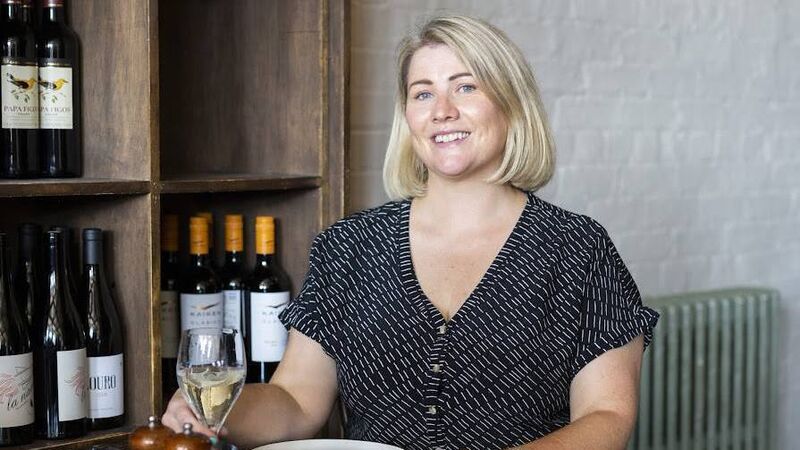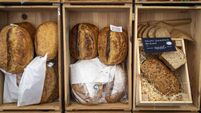'You can taste the gold stars'

Ali Dunworth, one of the judges at the 2205 Irish Food Awards, Blas na hÉireann
Have you ever eaten eight different mince pies side by side? I have. Quite a few times. I’m not some sort of mince pie maniac; I have just been working as a food journalist for most of my career, which has meant a lot of taste testing in various guises.
I worked in food television for a long time, where the year was punctuated by seasonal taste tests – stout on St. Patrick’s Day, chocolate at Easter, picnic supplies in summer and of course, Christmas was always a big deal and mince pies were usually a top priority. Little did I know that all that tasting was preparing my palate to one day be a judge for Ireland’s premier food and drink awards, Blas na hÉireann.
I first joined the Blas judging panel back in 2018. Back then the judging took place over many weeks in UCC, culminating in a finalist judging which took place in a hotel in Dingle. All the judges came together in a large conference room. I looked around and saw so many well-known faces and writers I looked up to. I was still relatively new in the world of Irish food media, having spent most of my career in the UK. The imposter syndrome was real. But I found my table and put my best poker face on.
Taste testing wasn’t new to me, nor was judging blind, but taste testing in this environment was different. We have no background information on the products, no sneaking a look at the packets; the only clue you have about what you are trying is the category it has been entered in and there are over 180 food and drink categories in the competition.
The sample arrives to the judge with only a number to identify it. There is an army of people behind the scenes dishing out the tasters with military precision. We have a form to fill out for each product and are asked to score it across five areas: appearance, aroma and flavour, texture, overall quality and mass appeal, awarding anything from zero up to a highest score of 12.
Awareness Preparation for the day is key. It might seem obvious, but you have to wear really comfortable clothes and something that won’t gather crumbs easily. A light breakfast and a few cups of tea are essential for me; I don’t want to go in there hungry and overindulge early on.
But no matter how prepared I think I am, it’s intimidating. Even if it’s a food I know really well, like mince pies, I always feel a huge weight of responsibility to give the samples every bit of awareness I have. I will smell it, examine it, touch it and of course taste. You can’t just be giving it a cursory look or a nibble.
I’m a messy eater but hyper aware. I’m thinking of the producers that have entered Blas, many of them small artisan, passionate producers that have put a mammoth amount of work into the food and drink in front of us. I feel like I have to put as much effort into my tasting.
But that being said, once I switch on my food brain, the nerves dissipate and confidence in my taste buds soars. The environment we are in helps. There are other judges with me, but we don’t confer; there’s no chatting, I daren’t even glance at what anyone else is doing or reacting, as I don’t want to be influenced, but we are all good at stony-faced tasting at this stage, I think.
The five parameters we judge by haven’t changed since I started out eight years ago, but lucky for the organisers, parts of the system have. There’s no more pen and paper; these days we have the forms open on our laptops or phones and fill in the scores there, meaning they are getting results in real time, which must be a world of difference from adding up and double and triple checking pieces of paper like they did for years.
The judging questions stay the same, I imagine, because they have been devised in such a way that they really get us examining and thinking about the food or drink that is in front of us. It’s a measured combination of my personal knowledge and tasting but also practical unbiased judgment because of how the samples are presented.
We are thoughtfully tasting, but also thinking, does this have mass appeal? Does it look good in the glass? Does it feel right? There are dozens of questions running through my mind as the crumbs fall around me but at the end of the day, for the most part, when you taste something not up to scratch or really special, you know straight away. I remember another judge said to me when I started, “You can taste the gold stars, you’ll know when you do.” And you do. Some of the stuff just stands out straight away.
When we finish our segments, we are usually bursting to discuss any standout stuff or indeed anything unusual. I like to keep notes so I can follow up with the team after to find out what I tasted. Many of the judges will come to Dingle in October for the award announcements, and it’s so cool to see a product you tasted, particularly if they won. You feel part of that.
The awarded producers are always so happy; it’s infectious. There are lots of feel-good moments and a real sense of community between producers, judges, buyers and everyone else who flocks to Dingle for a very busy but fun few days.
Those fellow judges that I was so intimidated by at the start—many of them are friends and colleagues now. Sometimes you’ll get to judge on a panel with people who are far more expert than you think you are. Like this summer, I judged drinks for the first time and had both Aoife Carrigy, drinks writer for the Irish Independent, and Judith Boyle, beer sommelier, brewer and judge at the World Beer Awards. You better believe I was grilling them for extra advice before we went in and started sipping. Judith reminded me that when tasting beer, unlike wine, you generally don’t spit. Many flavours and aromas will become apparent only after swallowing a sip of beer. Lucky for me, that was an evening tasting, so I gave it my all and swallowed those beers down.








